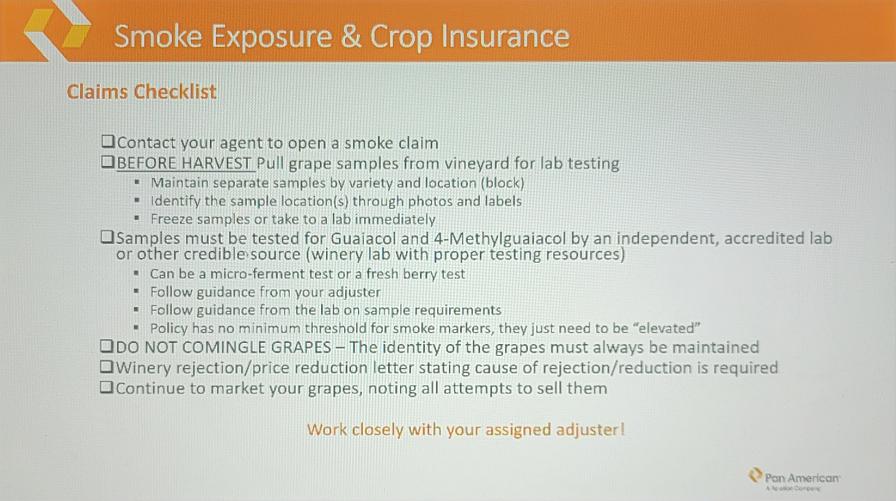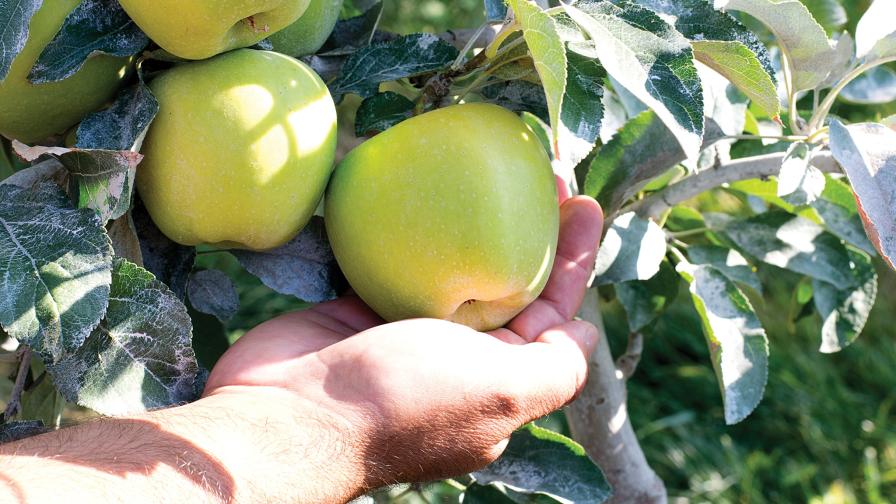‘Smoke Summit’ Aims To Help Get Clarity on Grape Taint
Federal officials are getting serious about helping wine grape growers with problems related to wildfires’ impacts on grapes’ flavors, announcing at the 2023 Virtual Smoke Summit it would spend $25 million over five years on the problem.
The topic had never been addressed before, Tim Rinehart, USDA ARS Crop Production and Protection National Program Leader for Specialty Crops in Beltsville, MD, said.
“We understand this is a pressing issue, and we are working hard to meet stakeholders’ needs,” Rinehart said during the June meeting organized by the West Coast Smoke Exposure Task Force. “We are in this for the long haul. We expect this research effort to grow and develop over time.”
The task force is operated by industry leaders and wine grape associations from the three West Coast states of California, Oregon, and Washington. Judging by the giant wildfires burning in Northern Canada, which have sent vast amounts of smoke to the East Coast and Midwest, the task force may well want to increase its geographic representation.
The online Smoke Summit attracted a large online audience, with more than 500 attendees from a total of 15 states, said Natalie Collins, President of the California Association of Winegrape Growers. It included updates and recent findings on wildfire smoke impacts from leading researchers at Oregon State University, University of California, Davis, and Washington State University.
In addition, USDA ARS provided updates on research activities, which have two top priorities, Rinehart said. The first is to determine the thresholds for taint, which is complicated because there are many factors, from the grape variety to the age of the smoke. The second is to develop new technologies to help growers and vintners deal with the problem, from vineyard to winery.

The most important thing for growers to keep in mind about smoke taint is there is no penalty for filing a claim, says Kristine Fox, Vice President & Director of Crop Insurance at Pan American Insurance Services. “Always err on the side of filing a claim.”
Source: Pan American Insurance Services
RESEARCH TOPICS
Another USDA ARS representative, Tara McHugh, Area Director for the Pacific West Area, Albany, CA, said she was impressed when members of the Smoke Task Force initially came to her office a few years ago for help.
“It’s nice for me to see this group make so much progress in the past year,” she said.
ARS collaborates with stakeholders, such as growers and vintners, and universities, with the latter receiving about half of the money committed to the project. She said they have already done some work, using nanoparticle technology to develop a smoking chamber to conduct reproducible smoke experiments.
Several ARS research leads will be collaborating on projects, including these McHugh listed:
1. Forecasting and Tracking Smoke Exposure in Vineyards — Will help mitigate smoke, and set harvest dates and times to reduce smoke taint.
2. Molecular Resources for Enhanced Crop Biotechnology — Genetically modify grapes to reduce accumulation of smoke taint compounds using “microvines” — from a dwarf mutant grape variety — that allow for quicker testing.
3. Looking for bacteria that “eat up” smoke-derived compounds.
4. Probing Effect of Smoke on Damage to Photosystem Function — Interference with Photosynthesis — Whether smoke exposure affects yields.
5. Recruiting a researcher to prepare an economic analysis of smoke perception and management by the industry.
6. Investigating Dose-Response to Smoke in Southern Oregon — Building six vine smoke dosing chambers and associated sensors to deliver different rates of smoke.
7. Research on Global Climate Change and how it affects grapes.









